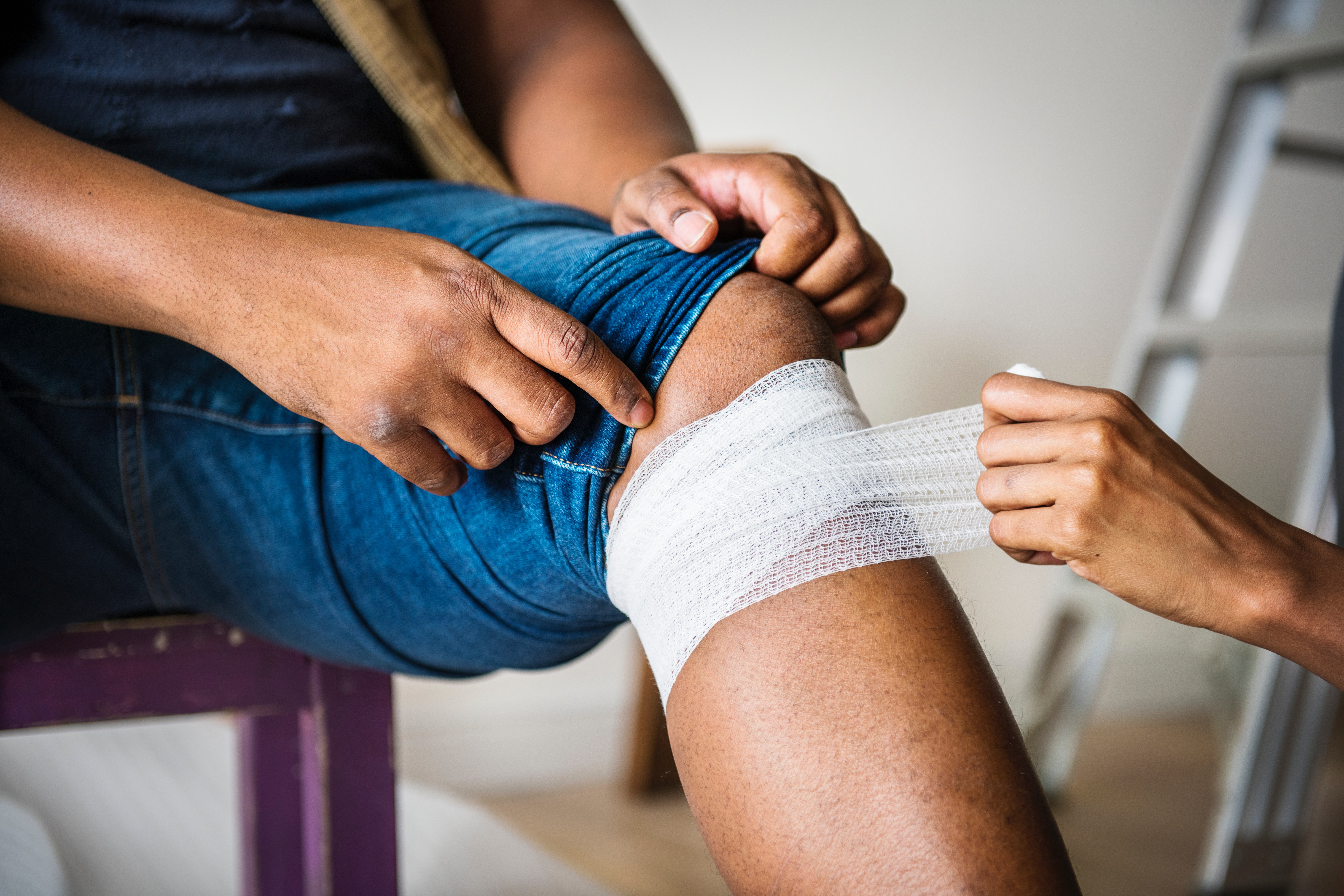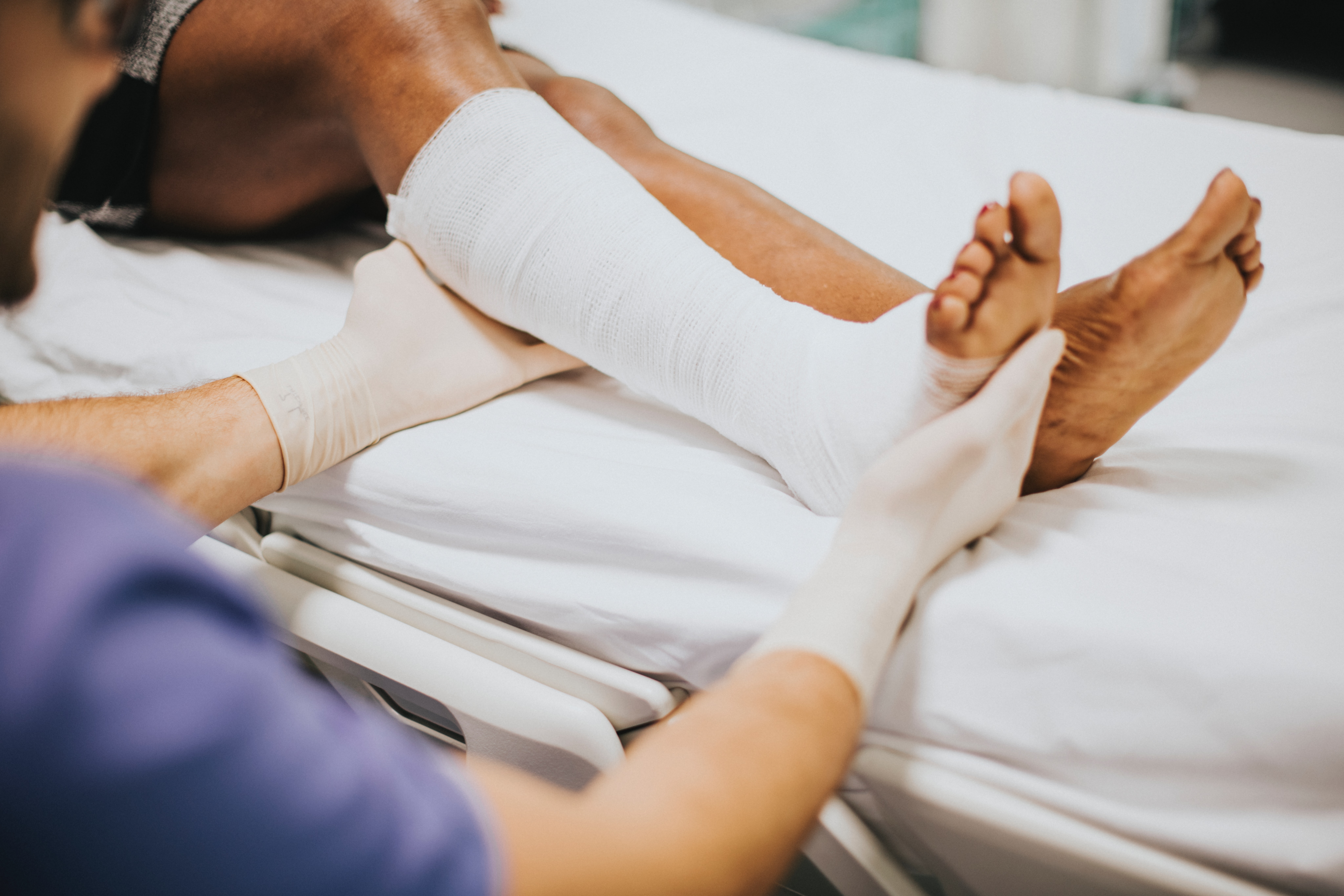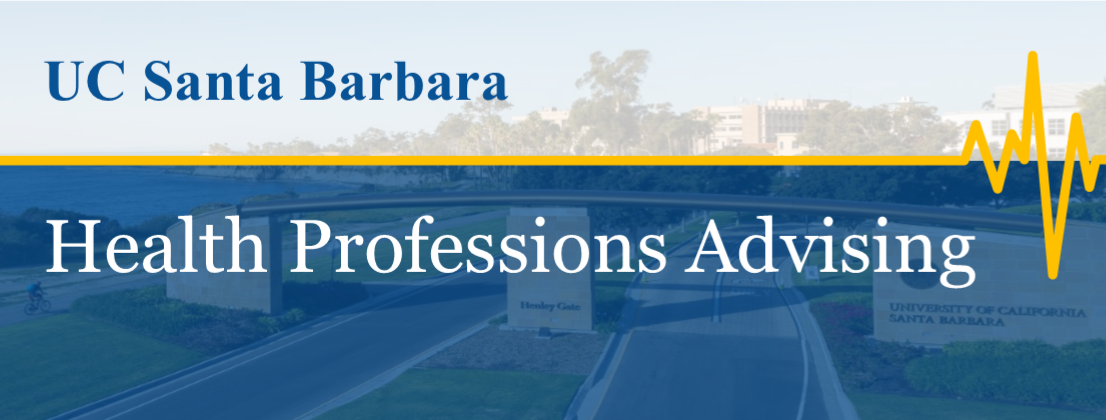Download Medical School Admissions Guide as a printable PDF
 SO YOU WANT TO BE A PODIATRIST?
SO YOU WANT TO BE A PODIATRIST?
Doctors of Podiatric Medicine (DPMs) prevent, diagnose and treat foot disorders resulting from injury or disease. A DPM makes independent judgments, prescribes medications and performs surgery. The human foot has a complex interrelation with the rest of the body which means that it may be the first area to show signs of serious conditions such as diabetes and cardiovascular disease. Since the podiatric physician is often the first to detect symptoms of these disorders, he or she becomes a vital and sometimes lifesaving link in the health care team. Doctors of Podiatric Medicine can perform and order all necessary diagnostic tests (such as laboratory work, x-rays, MRIs and CAT scans) and required treatments (including, but not limited to, surgery, medications, and physical therapy programs).Specialty areas include surgery, sports medicine, biomechanics, geriatrics, pediatrics, orthopedics or primary care. There are nine colleges that grant DPM degrees and more than 200 hospitals and institutions that offer the required 2 years of postdoctoral training residencies in podiatric medicine.
Helpful Information
If you are interested in pursuing a career in podiatry, you should visit the office of a practicing podiatrist to learn more about the profession and possibly to obtain a letter of recommendation, which will be needed when you apply to a podiatry program. This visit will demonstrate both your seriousness in applying to a college of podiatric medicine and will give you a firsthand opportunity to see if the profession fits your needs and aptitudes. Any visit or volunteer experience you are able to conduct at a podiatrist’s office should be mentioned in your application to podiatric medical colleges. A letter of recommendation and/or some statement from the doctor can document evidence of your experience.
PREREQUISITES: THESE ARE GENERAL PREREQUISITE COURSES THAT MANY PODIATRY PROGRAMS REQUIRE FOR ADMISSION; HOWEVER, COURSE REQUIREMENTS OFTEN VARY FROM ONE SCHOOL TO THE NEXT. ADDITIONALLY, THERE ARE SEVERAL OTHER COURSES THAT ARE NOT REQUIRED BY SOME PROGRAMS BUT ARE HIGHLY RECOMMENDED. WE ENCOURAGE ALL STUDENTS TO VISIT THE WEBSITES OF THE PROFESSIONAL SCHOOLS YOU PLAN TO APPLY TO IN ORDER TO FAMILIARIZE YOURSELF WITH EACH SCHOOL'S ADMISSION REQUIREMENTS AND PROCESS. IF YOU ARE STILL UNSURE WHETHER COURSES YOU'VE TAKEN WILL SATISFY A PARTICULAR SCHOOL'S REQUIREMENTS, PLEASE REACH OUT DIRECTLY TO THE SCHOOL.
|
Chemistry (Full Year/3 Quarters) |
CHEM 1A (4 units): General Chemistry CHEM 1B (3 units): General Chemistry CHEM 1C (3 units): General Chemistry CHEM 2AL (2.5 units): General Chemistry Lab CHEM 2BL (2.5 units): General Chemistry Lab |
|
Biological Sciences (Full Year/3 Quarters) |
MCDB 1A (4 units): Intro. To Biology I MCDB 1B (3 units): Intro. To Biology II--Physiology MCDB 1LL (1.5 units): Intro. To Biology I Lab EEMB 2 (2 units): Intro. To Biology II—Ecology and Evolution EEMB 3 (3 units): Intro. To Biology III EEMB 2LL (1.5 units): Intro. To Biology Lab II |
|
Organic Chemistry (Full Year/3 Quarters) |
CHEM 109A (4 units): Organic Chemistry CHEM 109B (4 units): Organic Chemistry CHEM 109C (4 units): Organic Chemistry CHEM 6AL (3 units): Organic Chemistry Lab (Chemistry 109A with a minimum grade of a C-; and Chemistry 109B (may be taken concurrently)) CHEM 6BL (3 units): Organic Chemistry Lab (Chemistry 6AL and 109A with a minimum grade of C-; and Chemistry 109B). Note: Even though this lab is no longer required for MCDB/EEMB majors, whether or not you choose to take the second lab should be based on the requirements for your major and your own research into the admissions requirements at each podiatry school you hope to apply to. If unable to find the information on a particular program's website, email their podiatry school admissions office for clarification. |
|
Physics (Full Year/3 Quarters) |
PHYSICS 6A (3 units) and PHYSICS 6AL (1 units): Introductory Physics w/Lab PHYSICS 6B (3 units) and PHYSICS 6BL (1 units): Introductory Physics w/Lab PHYSICS 6C (3 units) and PHYSICS 6CL (1 units): Introductory Physics w/Lab Note: Students who complete the PHYSICS 1 series will need to take PHYSICS 1-2-3-4-5 and PHYSICS 3L-4L-5L to satisfy a full year of Physics with labs. If your major only requires you to complete through PHYSICS 4 and PHYSICS 4L, then you may enroll in PHYSICS 6AL to satisfy the final lab requirement. If allowed by your major, we encourage students to complete the Physics 6 series instead. Note: Mathematics 2A or 3A or 34A or AP Math AB Exam score of 3 or higher are required for Physics 6A. Math courses may be taken concurrently with Physics 6A |
|
Biochemistry (1 Quarter) |
MCDB 108A (4 units). General Biochemistry (UCSB prerqs: MCDB 1A, and EEMB 2 and MCDB 1B; and Chemistry 1A-B-C; and Chemistry 109A-B-C (Chem 109C may be taken concurrently). Completion of all listed prerequisites with a grade of C or better.) *MCDB 108B Highly Recommended. MCDB and Non-MCDB majors may choose to take MCDB 110 (UCSB prerqes: Chem 1A-B-C and 109A-B, with grades of C or better, are prereqs.) Note: Some podiatry schools may only require a single course in Biochemistry; however, others may equate 2 quarters of Biochemistry to 1 semester of Biochemistry. Whether or not you choose to take a second Biochemistry course should be based on the requirements for your major and your own research into the admissions requirements at each podiatry school you hope to apply to. If unable to find the information on a particular program's website, email their podiatry school admissions office for clarification. |
|
Math* |
|
|
English/Writing (Full Year/3 Quarters) |
A combination of 3 UCSB courses taken in the Writing, English, and Comparative Lit. depts. should fulfill the full year of English requirement for most podiatry schools. Also, courses that satisfy the GE Special Subject Area Writing requirement should not be considered sufficient to satisfy the full year of English requirement. Remember, it is your responsibility to check the admissions requirements at each podiatry school you hope to apply to in order to make sure that the courses you take at UCSB and elsewhere will satisfy each program's specific requirements. |
|
Social/Behavioral Sciences & Humanities (2 Courses) (Highly Recommended; May be required by some programs.) |
PSY 1 and SOC 1 are highly recommended for MCAT prep. |
| Highly recommended: Prerequisite courses listed are minimum requirements; however, most successful applicants will have exceeded the minimum requirements by taking additional upper division science courses. Examples of appropriate courses include but are not limited to: |
MCDB 101A - Molec. Genetics I MCDB 103 - Cell Biology MCDB 131 - Gen. Microbiology
|
|
If you choose not to major in one of the natural sciences, you may wish to include one or two additional science electives in your program of study if your schedule permits. *Math requirements may vary by school so be sure to research individual prerequisites. |
|
|
Sample Pre-Podiatry Course Schedule, Years 1 & 2 (To be used as a guide and is not intended to be strictly adhered to by all pre-podiatry students!) |
|||
|
|
Fall Quarter |
Winter Quarter |
Spring Quarter |
|
Year 1 |
· Chem 1A · Mathematics or Statistics (See above) · GE or Elective |
· Chem 1B + 2AL · Math or Stats (See above) · GE or Elective · GE or Elective (if you feel you can handle another course) |
· Chem 1C + 2BL · Math or Stats (See above) · GE or Elective · GE or Elective |
|
Year 2 |
· MCDB 1A · Chem 109A · GE or Elective · GE or Elective? |
· MCDB 1B · EEMB 2 · MCDB 1LL · Chem 109B · Chem 6AL (May be done later) |
· EEMB 3 + EEMB 2LL · Chem 109C · Chem 6BL (May be done later · GE or Elective |
|
*Intro. Biology Labs: Beginning in Fall 2019, the Biology Program restructured its introductory labs, changing from three, 1 unit labs--MCDB 1AL, MCDB 1BL/EEMB 2L, and EEMB 3L--to two, 1.5 unit labs--MCDB 1LL and EEMB 2LL. Most students will take MCDB 1LL in winter quarter and EEMB 2LL in spring quarter. Although taken over two quarters rather than three, these will count as a full year of introductory biology labs. Students who have completed part of the previous lab series, please contact the Biology department advisors for information on how to complete the rest of the series. Note: Students who began the introductory lab sequence and completed MCDB 1AL but who were unable to complete the remaining lab courses in that sequence due to their discontinuation will complete EEMB 2LL, which the Biology Department deems as satisfactory completion of the lab sequence and which professional school programs should also view as having successfully satisfied a "full-year" of laboratory work. |
|||
|
Note that man programs require a year of physics with lab (Physics 6A & 6AL, 6B & 6BL, 6C & 6CL), and although most students complete physics by the end of the 3rd year, just when to take physics depends on how well students are meeting the demands of their other courses. |
|||
 EXAM AND GPA:
EXAM AND GPA:
The Medical College Admissions Test (MCAT): The MCAT is a standardized examination that consists of multiple choice sections that assess your knowledge of natural and behavioral sciences. In addition to concepts from biology, general and organic chemistry, and physics, the MCAT also includes material from biochemistry, basic research and statistics, and psychology and sociology concepts. Visit the American Association of Medical Colleges (AAMC) website for more information regarding the MCAT.
Grade Point Average (GPA): Minimum GPA requirements vary from program to program, but MOST competitive applicants have a minimum 3.5 GPA overall (AO) and in their science courses (BCPM).
Transcript Review and Grade Trends: Admission committees conisder a number of factors incluidng and beyond the final grades earned in courses. For example, admission committees will review and consider the number of courses/units taken each quarter, whether courses were taken P/NP, retaken, and were withdrawn from, resulting in a W on the official transcript. To learn more about what your official transcripts communicate to admissions committees, please review the AAMC's Anatomy of an Applicant Guide. (A link to the guide can be found in the first paragraph in the Current Students section of our website.)
TIMELINE
| **Students should note that there is no set path or timeline that dictates when students have to take their admission test or apply to professional school. Professional schools DO NOT penalize students for not applying at a particular time. The timeline above is only a guide, and students should plan to meet with a pre-health advisor to discuss their individual goals and needs | |||||
|
|||||
ADDITIONAL RESOURCES:
American Association of Colleges of Podiatric Medicine (AACPM) Click Here
AACPM Programs Click Here
American Association of Colleges of Podiatric Medicine Application Service (AACPMAS) Click Here
Medical College Admissions Test (MCAT) Click Here
